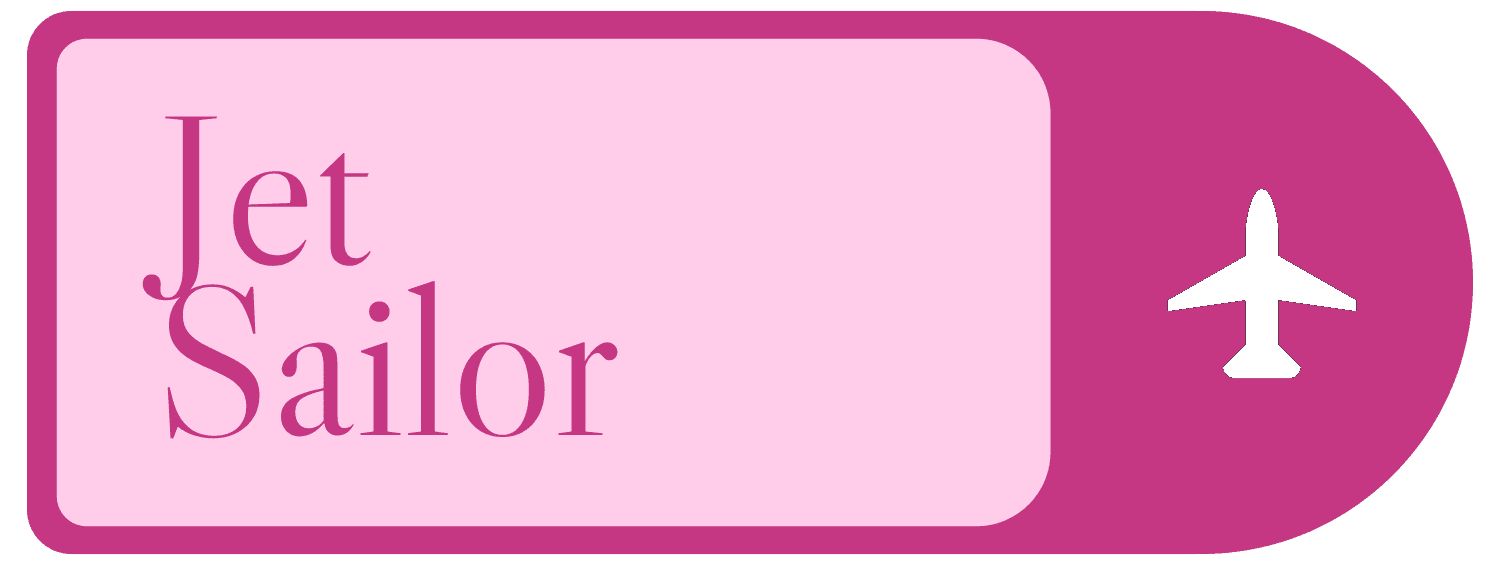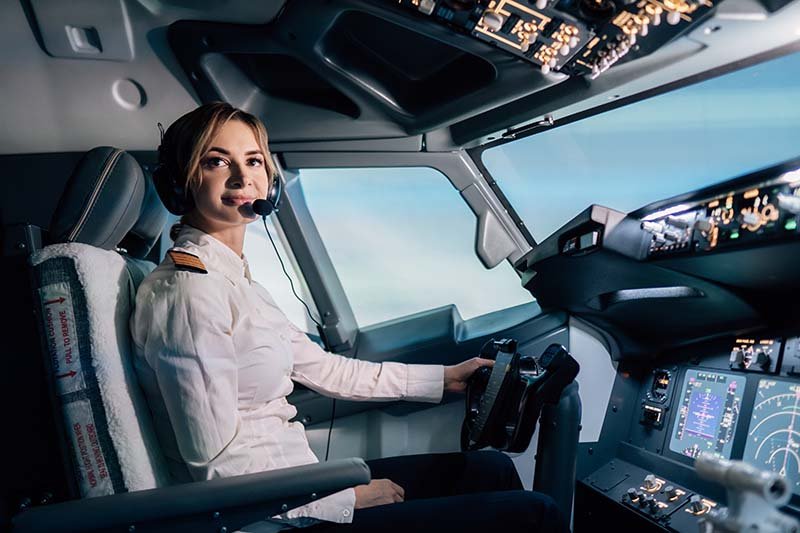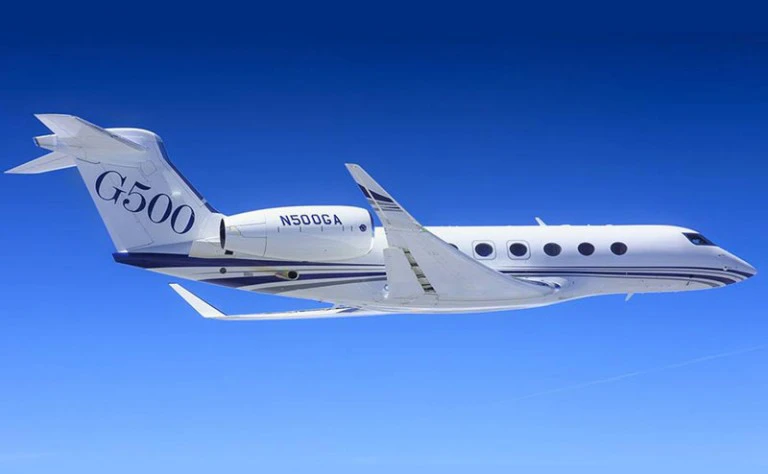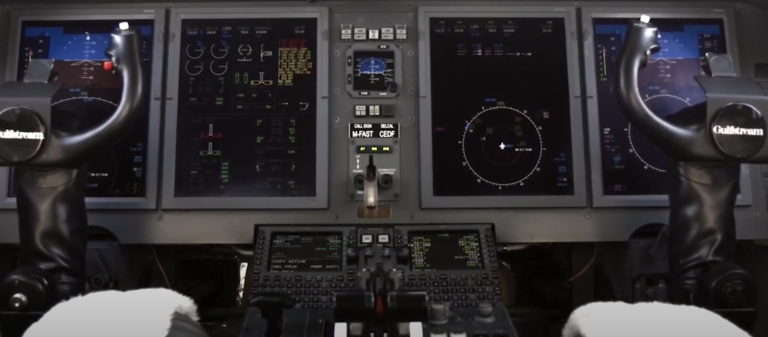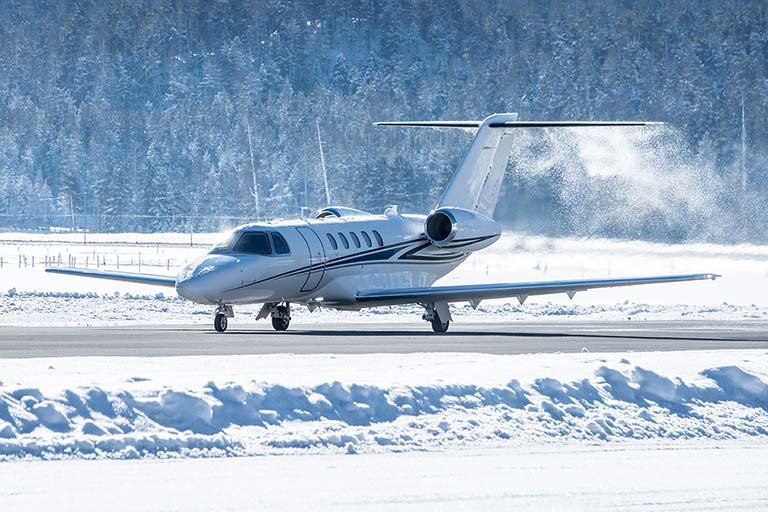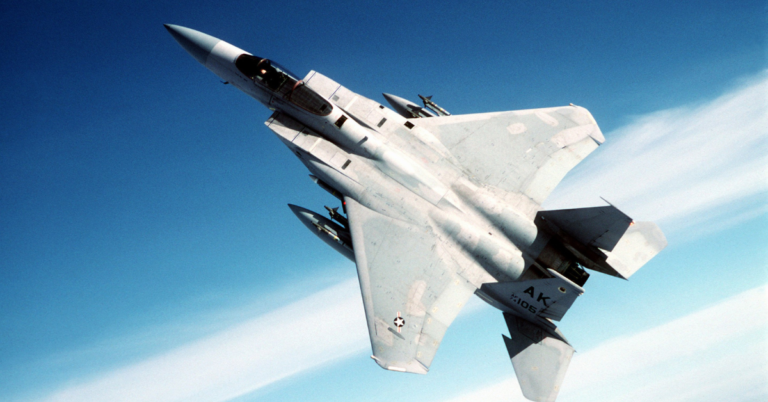Women in Aviation And The Pursuit of Gender Equality: Breaking Barriers
Women in aviation are breaking barriers, championing gender equality, and redefining the industry through resilience, skill, and determination, inspiring future generations.
The pursuit of gender equality in aviation is a journey marked by both progress and setbacks. Despite the barriers, women have made significant strides, breaking stereotypes and setting new standards. From piloting aircraft to leading aviation companies, their contributions are invaluable.
This blog delves into the history, achievements, and ongoing efforts to ensure a balanced and inclusive aviation industry. By examining the hurdles and celebrating the triumphs, we aim to inspire more women to soar in this exciting field. Join us as we explore the dynamic world of women in aviation and the quest for true gender equality.

Credit: www.paramountbusinessjets.com
Historical Milestones
The history of aviation is filled with remarkable achievements and inspiring figures. Women’s contributions to this field are no exception. They have made significant strides in the pursuit of gender equality within the aviation industry. The journey has been marked by numerous historical milestones that continue to inspire future generations.
Pioneering Women Aviators
Amelia Earhart is one of the most famous pioneering women aviators. She became the first woman to fly solo across the Atlantic Ocean in 1932. Her courage and determination broke barriers and opened doors for many women in aviation.
Another notable figure is Bessie Coleman. She was the first African American woman to earn a pilot’s license in 1921. She had to train in France because no American flight schools accepted her. Her legacy continues to inspire many aspiring aviators today.
World War Contributions
During World War I, women stepped up to fill roles traditionally held by men. Many served as pilots, mechanics, and engineers. Their contributions were crucial to the war effort.
In World War II, the Women Airforce Service Pilots (WASP) program was established in the United States. Women pilots flew non-combat missions, freeing up male pilots for combat roles. This program showcased women’s capabilities and proved their value in aviation.
These historical milestones highlight the significant impact women have had on aviation. Their achievements continue to pave the way for future generations of women in the industry.
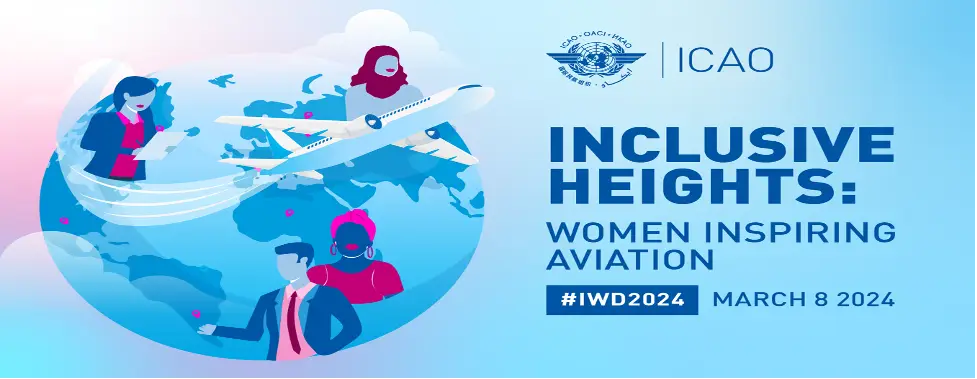
Credit: ifatca.org
Modern-day Achievements
Women in aviation have made significant strides towards gender equality. Today, we see remarkable achievements by women in this industry. Let’s explore some modern-day accomplishments.
Commercial Pilots
Commercial aviation has seen a rise in women pilots. Airlines now hire more female pilots than ever before. This shift marks a significant change.
- Captain Tammie Jo Shults – Known for safely landing Southwest Airlines Flight 1380.
- Captain Kate McWilliams – One of the youngest commercial airline captains at age 26.
- First Officer Alia Al Mansoori – The first female Emirati pilot for Emirates Airlines.
These women inspire future generations. They show that gender should not limit one’s career in aviation.
Military Aviation
Women in military aviation also achieve great things. They serve as pilots, engineers, and commanders. Their roles have expanded significantly.
| Name | Achievement |
|---|---|
| Major Mary Jennings Hegar | Recipient of the Distinguished Flying Cross with Valor Device. |
| Lieutenant Colonel Christine Mau | First woman to fly the F-35 Lightning II fighter jet. |
| Colonel Nicole Malachowski | First female pilot in the USAF Thunderbirds. |
These women serve with distinction. Their achievements pave the way for others. They break barriers and challenge stereotypes.
In both commercial and military aviation, women continue to excel. Their successes contribute to a more inclusive industry.
Challenges Faced
Women in aviation face numerous challenges. These challenges create barriers to gender equality in the industry. Recognizing these obstacles is essential for creating a more inclusive environment. Below, we explore some of the key challenges faced by women in aviation.
Gender Bias
Gender bias remains a significant issue in aviation. Many women experience discrimination based on their gender. This bias can manifest in various ways. Women may receive fewer opportunities for advancement. They might also encounter stereotypes about their abilities. These biases can discourage women from pursuing careers in aviation. The result is a lack of diversity within the industry.
Work-life Balance
Achieving a work-life balance is another challenge for women in aviation. The industry often demands long and irregular hours. This can make it difficult for women to manage family responsibilities. The lack of flexible work options adds to the challenge. Women might feel pressured to choose between their career and personal life. Supporting work-life balance is crucial for retaining talented women in aviation.

Credit: www.paramountbusinessjets.com
Organizations And Support Groups
Organizations and support groups play a critical role in promoting gender equality in aviation. They provide resources, mentorship, and networking opportunities for women. These groups help women overcome barriers and succeed in the aviation industry.
International Associations
International associations work to support women in aviation worldwide. One of the most notable is Women in Aviation International (WAI). WAI promotes the advancement of women in all aviation and aerospace careers. They offer scholarships, conferences, and networking opportunities. Another key organization is the International Society of Women Airline Pilots (ISWAP). ISWAP focuses on supporting female airline pilots through resources and advocacy. These associations create a global network of women in aviation.
Mentorship Programs
Mentorship programs are vital for career growth in aviation. Many organizations offer structured mentorship programs. These programs connect experienced professionals with aspiring aviators. Mentors provide guidance, support, and career advice. The Ninety-Nines, an international organization of women pilots, has a robust mentorship program. It helps women navigate their aviation careers. Mentorship helps build confidence and skills needed for success in aviation.
Educational Opportunities
The aviation industry has historically been male-dominated. Yet, women are making significant strides. Educational opportunities are key to achieving gender equality in aviation. This section explores the various avenues available for women to pursue a career in aviation.
Aviation Schools
Aviation schools provide essential training and education for aspiring pilots and aviation professionals. Many schools now emphasize gender diversity in their programs. These schools offer various courses tailored to different aspects of aviation. Flight training, aircraft maintenance, and air traffic control are some examples.
Some renowned aviation schools include:
- Embry-Riddle Aeronautical University: Offers a wide range of aviation programs.
- Purdue University: Known for its comprehensive aviation courses.
- Ohio State University: Provides excellent aviation education and training.
These institutions ensure women receive quality education and training. They also provide a supportive environment. This support helps women thrive in the aviation industry.
Scholarships And Grants
Scholarships and grants play a vital role in supporting women in aviation. Financial aid helps reduce the burden of education costs. Many organizations and foundations offer scholarships specifically for women.
Some notable scholarships include:
| Scholarship Name | Details |
|---|---|
| Amelia Earhart Memorial Scholarship | Provided by The Ninety-Nines. Supports women pursuing aviation education. |
| Women in Aviation International Scholarships | Offers various scholarships for different aviation fields. |
| Fly Now Award | Helps women achieve their first solo flight. |
Grants also offer financial assistance. They cover costs like flight training and certification. These opportunities are crucial for women entering the aviation industry.
In summary, educational opportunities such as aviation schools, scholarships, and grants are vital. They empower women to pursue careers in aviation. This support helps create a more gender-equal industry.
Influential Figures
Women have significantly contributed to aviation, breaking barriers and inspiring others. Their stories of perseverance, skill, and passion continue to shape the industry. This section highlights some of the influential figures in aviation, showcasing their remarkable achievements and impact.
Trailblazing Pilots
Amelia Earhart remains a legendary figure in aviation. She was the first woman to fly solo across the Atlantic Ocean. Her courage and determination inspired countless women to pursue aviation careers. Bessie Coleman was another pioneering pilot. She became the first African American woman to hold a pilot’s license. Despite facing racial and gender discrimination, she traveled to France to earn her license. Her legacy continues to encourage aspiring pilots from diverse backgrounds.
Jacqueline Cochran also made significant strides in aviation. She was the first woman to break the sound barrier. Her achievements in speed and altitude records set new standards in the industry. Cochran’s contributions during World War II, where she led the Women Airforce Service Pilots (WASP), were invaluable.
Aerospace Engineers
Mary Jackson’s career at NASA is a testament to her skills and dedication. She became NASA’s first African American female engineer. Her work in aerodynamics and wind tunnel testing was critical to many space missions. Her story is a powerful example of overcoming obstacles and excelling in a male-dominated field.
Judith Resnik was another influential aerospace engineer. She became the second American woman in space. Her expertise in electrical engineering and her contributions to the Space Shuttle program were significant. Tragically, she lost her life in the Challenger disaster, but her legacy endures.
Kalpana Chawla’s achievements in aerospace engineering and space exploration are also noteworthy. She was the first woman of Indian origin to go to space. Her work and dedication to space missions continue to inspire many young women globally.
Media Representation
The media plays a crucial role in shaping public perception. Representation of women in aviation is vital. Through films, documentaries, books, and publications, media can highlight their contributions. It also helps in addressing gender equality within the industry.
Films And Documentaries
Films and documentaries can inspire many young women. They showcase the stories of women aviators. For example, “Amelia” tells the story of Amelia Earhart. Documentaries such as “Fly Like a Girl” highlight various women pilots. These visual stories educate the public. They also motivate young girls to pursue aviation careers.
Books And Publications
Books and publications provide in-depth insights. They cover the challenges and achievements of women in aviation. For instance, “Women Aviators: 26 Stories of Pioneer Flights, Daring Missions, and Record-Setting Journeys” offers inspiring tales. Magazines like “Aviation for Women” celebrate the contributions of female aviators. These resources serve as a valuable reference. They also promote awareness and understanding.
| Film/Documentary | Description |
|---|---|
| Amelia | A biographical film about Amelia Earhart. |
| Fly Like a Girl | A documentary showcasing women pilots. |
| Book/Publication | Description |
| Women Aviators | Stories of pioneer women aviators. |
| Aviation for Women | A magazine celebrating female aviators. |
Future Prospects
The future of women in aviation looks promising. With ongoing efforts to promote gender equality, many women are entering the aviation industry. They are breaking barriers and creating new opportunities for the next generation. This section explores the future prospects of women in aviation, focusing on technological advances and policy changes.
Technological Advances
Technological advances are shaping the aviation industry. Women are playing a key role in this transformation. They are working as engineers, pilots, and technicians. New technologies like drones and electric planes are creating more job opportunities. These roles require specialized skills, and women are stepping up to meet these demands.
Flight simulators and virtual reality are making training more accessible. Women can now train from anywhere in the world. This reduces the cost and time required for traditional training methods. It also allows for more flexible learning schedules.
Automation and artificial intelligence are also changing the landscape. These technologies are reducing the workload on pilots. They are making flights safer and more efficient. Women are contributing to the development and implementation of these technologies.
Policy Changes
Policy changes are crucial for promoting gender equality in aviation. Governments and organizations are implementing policies to support women. These policies aim to create a more inclusive and diverse workforce.
Some policies focus on recruitment and retention. They encourage more women to join the aviation industry. They also provide support to women already working in the field. This includes mentorship programs, networking opportunities, and career development resources.
Other policies address work-life balance. They provide flexible working hours and parental leave options. These policies help women balance their career and family responsibilities.
Scholarships and grants are also available for women pursuing careers in aviation. These financial aids make education and training more affordable. They encourage more women to pursue their dreams in aviation.
International organizations like the International Civil Aviation Organization (ICAO) are also playing a role. They are advocating for gender equality and encouraging member states to adopt supportive policies. Their efforts are helping to create a more inclusive global aviation community.
The future of women in aviation is bright. With technological advances and policy changes, more women are entering and excelling in the industry. These efforts are creating a more inclusive and diverse aviation workforce.
Frequently Asked Questions
What Challenges Do Women Face In Aviation?
Women face gender bias, limited opportunities, and workplace discrimination in aviation. They also struggle with work-life balance and representation.
How Can Gender Equality Be Promoted In Aviation?
Promoting gender equality in aviation involves mentorship programs, inclusive policies, and equal opportunities. Encouraging STEM education for young girls is crucial.
What Are The Benefits Of Gender Diversity In Aviation?
Gender diversity enhances creativity, improves decision-making, and boosts productivity. It also promotes a more inclusive and innovative work environment.
Are There Successful Women Role Models In Aviation?
Yes, many successful women in aviation include pilots, engineers, and executives. They inspire and pave the way for future generations.
Conclusion
Women in aviation are making strides toward gender equality. Their perseverance and dedication inspire future generations. More representation is needed to foster diversity in the industry. Support and mentorship play crucial roles in this journey. Encouraging young girls to pursue aviation careers is essential.
Together, we can build a more inclusive aviation industry. The future of aviation depends on embracing gender equality. Let’s continue to champion women’s contributions and achievements. Their success benefits the entire aviation community.
